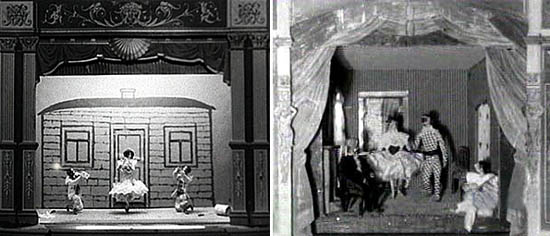February 22, 2023
The first Russian animation

For a long time, the first creator of Russian animation was considered to be the biologist Vladislav Starevich. As a teacher, the scientist created his first animated work - "Lucanus Cervus", which tells about the struggle of horned beetles for a female, back in 1910 with a pedagogical purpose. Initially, the planned shooting of the behavior of beetles was not successful due to the fact that live insect individuals lost activity under bright artificial lighting. That is why it was decided to replace live horned beetles with stuffed animals fixed on a wire frame. "Lucanus Cervus" has gained overwhelming popularity.
In 1912, the audience was presented with a new animated picture "The Beautiful Lucanida, or the War of the barbels with the horns", the main actors were again beetles. The cardinal difference from the first work was that this time the animation became artistic: beetles played the roles of heroes of medieval novels about knights.
Vladislav Starevich has gained worldwide fame, his films have become part of the golden fund of world cinema. During the creative activity of the biologist , the following animated short films were presented to the public: "The night before Christmas", "Lily of Belgium", "Revenge of the cinematographic operator", "Christmas at the inhabitants of the forest", "Dragonfly and ant", "Funny scenes from the life of animals".
In 1995, Viktor Bocharov, a film critic and researcher of the history of cinema, discovered recordings of puppet ballet productions in the archives that were not previously known to the general public. These were animations of paper ballerinas, shot by Alexander Shiryaev in 1906, 4 years before the release of "Lucanus Cervus" by Vladislav Starevich.
Alexander Shiryaev served as a choreographer and teacher at the Mariinsky Theater in St. Petersburg and did not suspect that he became the first animator of the Russian Empire. During a trip to London, the theater actor bought a movie camera for amateur shooting, he filmed family and friends. Carried away by the process, the ballet dancer offered his services as an operator to shoot ballerinas on the stage of the Directorate of the Imperial Theaters, which he received a strict ban on.
The choreographer did not give up his idea after the refusal and began shooting footage of the preparation of artists for rehearsals, thinking over all the details of the performances and recreating them with the help of dolls and cardboard. They created a small stage, to which lighting was brought, imitating theatrical light. Twenty-centimeter ballerina dolls were made of papier-mache on a wire frame, so that the limbs of the figures were movable. These models became a way of working out the choreography before the rehearsals.

Alexander Shiryaev showed his cartoons to ballet dancers for a better understanding of the idea of a particular production. He filmed them exclusively for educational purposes and did not present them to the public, which is why this aspect of his creative activity was not known to the public for 89 years.
So, in 1995, the audience saw: "Pierrot Artists", "Clowns Playing Ball" and a drama about love with a happy ending "Harlequin Jokes" - the first masterpiece paintings of Russian animation. Modern animators are still amazed by the elegance and aesthetics of Alexander Shiryaev's animation. In 2003, Viktor Bocharov released a film called "Belated Premiere", which included the very frames of Alexander Shiryaev's animation.
Read more
April 12, 2024
April 5, 2024